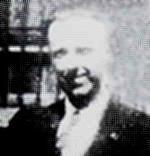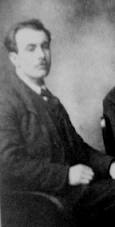
Richard James Mulcahy was an Irish Fine Gael politician and army general who served as Minister for Education from 1948 to 1951 and from 1954 to 1957, Minister for the Gaeltacht from June 1956 to October 1956, Leader of the Opposition from 1944 to 1948, Leader of Fine Gael from 1944 to 1959, Minister for Local Government and Public Health from 1927 to 1932, and Minister for Defence from January to April 1919 and from 1922 to 1924. He served as a Teachta Dála (TD) from 1922 to 1938, and from 1943 to 1961. He was a Member of Parliament for the Dublin Clontarf constituency from 1918 to 1922.
Events from the year 1919 in Ireland.

Seán Moylan was a Commandant of the Irish Republican Army and later a Sinn Féin and Fianna Fáil politician. After the Irish War of Independence he also served under Taoiseach Éamon de Valera as Minister for Lands (1943–48), Minister for Education (1951–54) and Minister for Agriculture (1957).
The Squad, originally nicknamed the Twelve Apostles, was an Irish Republican Army (IRA) unit founded by Michael Collins to counter British intelligence efforts during the Irish War of Independence, mainly by means of assassination.
The Irish Republican Army was a guerrilla army that fought the Irish War of Independence against Britain from 1919–1921. It saw itself as the legitimate army of the Irish Republic declared in 1919. The Anglo-Irish Treaty, which ended this conflict, was a compromise which abolished the Irish Republic, but created the self-governing Irish Free State, within the British Empire. The IRA was deeply split over whether to accept the Treaty. Some accepted, whereas some rejected not only the Treaty but also the civilian authorities who had accepted it. This attitude eventually led to the outbreak of the Irish Civil War in late June 1922 between pro- and anti-Treaty factions.

Sologhead beg or Solohead beg is a townland and civil parish in County Tipperary, Ireland, lying northwest of Tipperary town.

(Patrick James) P. J. Moloney was an Irish Sinn Féin politician. Prior to entering politics he was a chemist.

Edmond Foley, sometimes known as Edmund or Edward, was a member of the Irish Republican Army (IRA) who was hanged in Mountjoy Prison on 7 June 1921. Together with nine other men executed by hanging during the War of Independence, he was one of The Forgotten Ten.

The 3rd Tipperary Brigade was one of the most active of approximately 80 such units that constituted the Irish Republican Army during the Irish War of Independence. The Brigade was based in southern Tipperary and conducted its activities mainly in mid-Munster.

Knocklong is a small village situated in County Limerick, Ireland, located on the main Limerick to Mitchelstown to Cork road. The 2011 census statistics for Knocklong counts 122 males, 143 females, 128 households and 21 vacant households.
Sean Finn was a commander of multiple units in the IRA's Irish War of Independence in the early 20th century. He led many attacks on the ruthless Black and Tans and the heavily-armed RIC patrols, with his brigade usually armed only with shotguns.
William Quirke was an Irish Fianna Fáil politician and a senior revolutionary figure in County Tipperary during the Irish War of Independence.

The Soloheadbeg ambush took place on 21 January 1919, when members of the Irish Volunteers ambushed Royal Irish Constabulary (RIC) officers who were escorting a consignment of gelignite explosives at Soloheadbeg, County Tipperary. Two RIC officers were killed and their weapons and the explosives were seized. The volunteers acted on their own initiative and had not sought authorisation for their action. As it happened on the same day that the revolutionary Irish parliament first met and declared Ireland's independence, it is often seen as the first engagement of the Irish War of Independence.


















